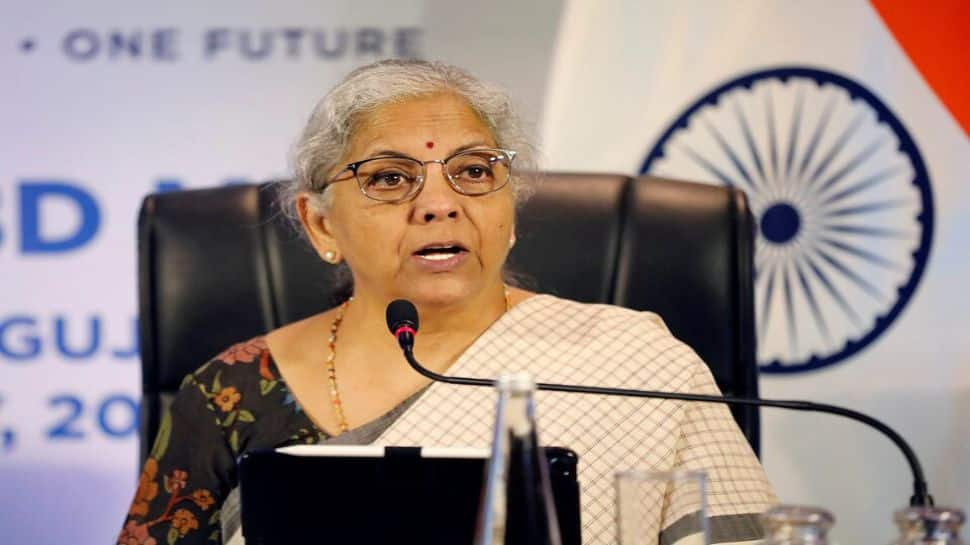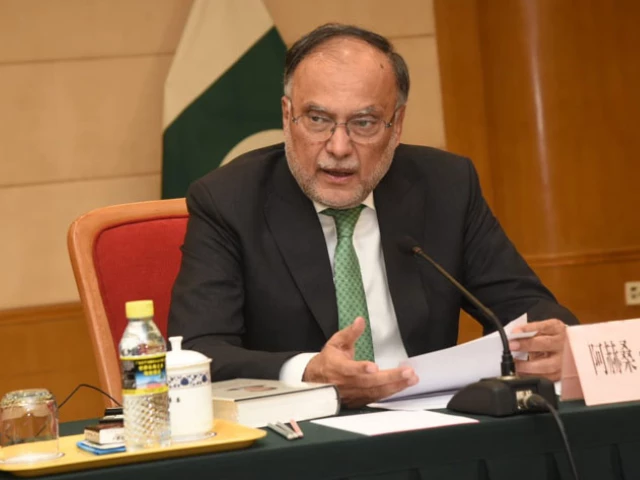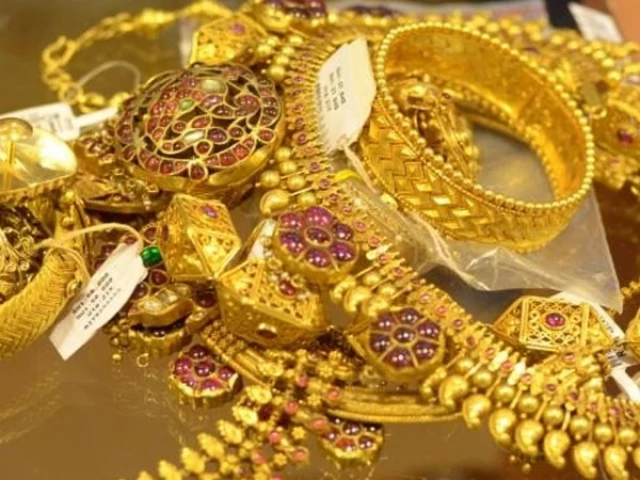Business
Higher tariffs are kicking in. Here’s what Walmart and other retailers said about their impact

Customer with shopping cart in the snack aisle of a Walmart store in Florida City, Florida, Aug. 5, 2025.
JC Milhet | AFP | Getty Images
As some of the biggest names in retail, including Walmart and Home Depot, delivered earnings results in recent weeks, they updated Wall Street on how they and their shoppers are responding to President Donald Trump‘s wave of tariff increases.
The takeaway?
Tariff costs are rising for retailers, and they’ve had to get creative to avoid widespread price hikes.
Yet consumer spending has largely stayed strong so far — and the pinch from higher duties hasn’t been as severe as some companies had feared. Compared with their concerns in the spring, retail executives struck a measured tone and said they don’t expect their costs, or customers’ prices, to jump dramatically.
Walmart had given one of the strongest warnings in May, as CFO John David Rainey said he expected some prices to rise during the summer. In an interview with CNBC on Thursday, however, Rainey said the nation’s biggest retailer has raised prices on some items, but in other parts of its stores has kept prices down or expanded discounts.
“There are certainly areas where we have fully absorbed the impact of higher tariff costs,” he said. “There are other areas where we’ve had to pass some of those costs along. But when you look across the basket of items, we’re certainly trying to keep prices as low as we can.”
Scot Ciccarelli, a retail analyst for Truist, said retailers are raising prices “but not nearly to the degree that might have been expected in early April” when Trump first announced his steep tariffs on dozens of countries.
“Most of the companies are kind of downplaying the impact of tariffs,” he said. “They’ve all talked about substantial mitigation efforts, whether that is diversifying sourcing, whether that is pushing price back to vendors.”
Here are three takeaways from a busy couple of weeks of retail earnings.
Consumer spending is steady — with some exceptions
The drumbeat of steady, but selective, U.S. consumer spending continued this quarter.
At Walmart, the nation’s largest grocer by revenue, sales of private-label items, which tend to cost less than national name brands, were roughly flat, Rainey told CNBC. When customers trade down to those cheaper brands or smaller packs of items, it can signal U.S. households feel strapped for cash.
As companies closely watch the consumer, Rainey said Walmart has seen shopper behavior that’s “very consistent.”
“They continue to be very resilient,” he said.
Walmart and Coach parent company Tapestry both raised their sales outlooks for the full year. Both companies said they saw healthy sales of discretionary items, such as clothing and handbags.
Sales of fashion items, including ladies’ apparel and shoes, accelerated at Walmart in the quarter, Rainey said.
One of Coach’s handbags, the large Kisslock bag that costs $695, sold out within minutes of launching in July, Tapestry CEO Joanne Crevoiserat said last week on the company’s earnings call.
Yet some categories are still a tough sell. And lower-income shoppers have been more sensitive to price changes.
Walmart CEO Doug McMillon said Thursday that the effect of tariffs on spending “has been somewhat muted.” Still, he added some shoppers have noticed and responded when prices creep up.
“As we replenish inventory at post-tariff price levels, we’ve continued to see our costs increase each week, which we expect will continue into the third and fourth quarters,” he said. “Not surprisingly, we see more adjustments in middle- and lower-income households than we do with higher-income households and discretionary categories where item prices have gone up.”
Sales at Home Depot and Lowe’s improved as the quarter went on, with the strongest in July. Still, the companies weren’t ready to predict a turnaround for home improvement.
Lowe’s CEO Marvin Ellison attributed some of the recent pickup in demand to better weather and said “it’s too early for us to call that a trend.” Higher mortgage rates and borrowing costs have dinged homeowners’ willingness to tackle a major renovation or move to a new home, which tends to spur home projects.
Other brands had more dire warnings about spending. On the company’s earnings call, Crocs CEO Andrew Rees described the backdrop for the second half of the year as “concerning” and said its retail orders are weak.
He described Crocs’ customers as “super cautious.”
“They’re not purchasing. They’re not even going to the stores, and we see traffic down,” he said, adding that’s also true at its outlets, which draw more lower-income households.
Customers shop at a Home Depot store on August 19, 2025 in Chicago, Illinois.
Scott Olson | Getty Images
Retailers have blunted the effects of tariffs … so far
Retailers have jumped into action to try to minimize cost increases from tariffs or avoid them altogether.
Those tactics have included importing goods from a wider range of countries, getting items to the U.S. early and stocking up on high-frequency purchases or fresh merchandise that consumers are more likely to buy, even at higher prices, according to interviews of retail executives and earnings calls.
Yet as Walmart showed, retailers have been strategic about price increases — to not only avoid spooking customers, but also to dodge potential scrutiny from the White House. Trump criticized Walmart in May after the company warned it would have to raise prices.
Sharkninja, which makes a wide range of items including blenders and hairstyling tools, has “increased sell price on products, but done it very, very carefully,” CEO Mark Barrocas said in an interview. And in some cases, it had to roll back part of those price increases, he said.
The company has also reduced discounting and raised the price of new merchandise when it debuts. For example, Sharkninja initially planned to launch a new infrared skin care mask called CryoGlow at $299, but instead decided to price it at $349, he said.
For Walmart, Target and Tapestry-owned Coach, importing goods early and having merchandise in warehouses before tariffs took effect have helped them curb the hit from higher rates.
Home Depot Chief Financial Officer Richard McPhail told CNBC most of the imported products the company sold during the quarter landed ahead of tariffs. And Home Depot is taking more steps to blunt the effects: More than half of what the company sells comes from the U.S. and it aims to import no more than 10% from any single country by the end of the year.
Yet the tariff bill is still adding up. Walmart’s McMillon said he expects higher costs from duties to continue through the second half of the fiscal year. Other companies also provided specific estimates of how much the higher duties will cost them.
Even as Tapestry posted sales growth, its shares tumbled last week after it said costs from higher duties would total $160 million this upcoming fiscal year and ding profits.
While Trump’s tariff policy appears more settled than in the spring, tariffs on some countries could still rise.
Many of Trump’s tariffs on countries began in early August, but one of the key rates still hangs in the balance. He delayed higher tariffs on China for 90 days last week. Those had jumped as high as 145%, but are now at 30% as negotiations continue.
Target acknowledged the trade uncertainty with its own strategy. It gave a wider than usual range for its full-year earnings per share outlook.
Inside a Crocs store at Queens Center in New York.
Ryan Baker | CNBC
Strong brands, new moneymakers matter more than ever
Strong brand loyalty and lucrative new businesses have made it easier for some companies to weather the uncertainty.
As homeowners postpone larger projects, Home Depot and Lowe’s have bulked up their business among home professionals to attract steadier traffic and prepare for when demand picks up again. Along with reporting earnings this week, Lowe’s announced it’s buying Foundation Building Materials for $8.8 billion, marking its second acquisition of a home professional-focused company in recent months.
Home Depot announced its own pro-focused deal earlier this summer and made the largest acquisition in its history when it bought SRS Distribution last year.
Walmart also has benefited from newer revenue streams, especially its advertising business and third-party marketplace. Global advertising grew 46% in the most recent quarter, including ad-enabled smart TV maker Vizio, which it acquired last year.
Its marketplace revenue grew by 17% year over year. That business includes sellers who get charged a commission and often pay for services, such as ads on Walmart’s site to promote their products or fulfillment services to have the big-box retailer store pack and ship orders to customers.
Those “more diversified set of profit streams,” which have higher margins than selling a gallon of milk or a T-shirt, make Walmart’s earnings steadier even as the company faces profit pressures, Rainey said on the company’s earnings call.
“We are more than just a standard brick-and-mortar retail business,” he said on the call.
For some brands, customer demand is high enough to help offset tariffs or allow them to charge more.
Sandal maker Birkenstock, for instance, “saw no pushback or cancellations” after its tariff-related July 1 price increases, CEO Oliver Reichert said on the company’s earnings call.
Coach, which has driven up its average price of items over the past five years and reduced its level of markdowns, can better “absorb a lot of these input costs,” Coach CEO Todd Kahn told CNBC.
On the flip side, tariff costs have hit some brands harder, especially if they don’t have the new products customers seem to want or are skittish about what sales will look like later this year. High-performing companies with massive scale such as Walmart often have leverage with vendors to pass on costs — but other businesses might not.
“If you’re a struggling brand, or you’re not really growing your business with a vendor, that vendor has less incentive to absorb incremental costs, whether it’s from tariffs or supply chain or whatever,” Truist’s Ciccarelli said.
Target said its profit margins in the quarter were hurt by the costs of cancelling orders. Crocs also said it is reducing orders for the back half of the year.
Crocs took another unusual step: Rees said the company is taking back older inventory from retailers that sell its Heydude shoe brand and swapping it out with fresher styles.
Business
India’s $5 Trillion Economy Push Explained: Why Modi Govt Wants To Merge 12 Banks Into 4 Mega ‘World-Class’ Lending Giants

India’s Public Sector Banks Merger: The Centre is mulling over consolidating public-sector banks, and officials involved in the process say the long-term plan could eventually bring down the number of state-owned lenders from 12 to possibly just 4. The goal is to build a banking system that is large enough in scale, has deeper capital strength and is prepared to meet the credit needs of a fast-growing economy.
The minister explained that bigger banks are better equipped to support large-scale lending and long-term projects. “The country’s economy is moving rapidly toward the $5 trillion mark. The government is active in building bigger banks that can meet rising requirements,” she said.
Why India Wants Larger Banks
Sitharaman recently confirmed that the government and the Reserve Bank of India have already begun detailed conversations on another round of mergers. She said the focus is on creating “world-class” banks that can support India’s expanding industries, rising infrastructure investments and overall credit demand.
She clarified that this is not only about merging institutions. The government and RBI are working on strengthening the entire banking ecosystem so that banks grow naturally and operate in a stable environment.
According to her, the core aim is to build stronger, more efficient and globally competitive banks that can help sustain India’s growth momentum.
At present, the country has a total of 12 public sector banks: the State Bank of India (SBI), the Punjab National Bank (PNB), the Bank of Baroda, the Canara Bank, the Union Bank of India, the Bank of India, the Indian Bank, the Central Bank of India, the Indian Overseas Bank (IOB) and the UCO Bank.
What Happens To Employees After Merger?
Whenever bank mergers are discussed, employees become anxious. A merger does not only combine balance sheets; it also brings together different work cultures, internal systems and employee expectations.
In the 1990s and early 2000s, several mergers caused discomfort among staff, including dissatisfaction over new roles, delayed promotions and uncertainty about reporting structures. Some officers who were promoted before mergers found their seniority diluted afterward, which created further frustration.
The finance minister addressed the concerns, saying that the government and the RBI are working together on the merger plan. She stressed that earlier rounds of consolidation had been successful. She added that the country now needs large, global-quality banks “where every customer issue can be resolved”. The focus, she said, is firmly on building world-class institutions.
‘No Layoffs, No Branch Closures’
She made one point unambiguous: no employee will lose their job due to the upcoming merger phase. She said that mergers are part of a natural process of strengthening banks, and this will not affect job security.
She also assured that no branches will be closed and no bank will be shut down as part of the consolidation exercise.
India last carried out a major consolidation drive in 2019-20, reducing the number of public-sector banks from 21 to 12. That round improved the financial health of many lenders.
With the government preparing for the next phase, the goal is clear. India wants large and reliable banks that can support a rapidly growing economy and meet the needs of a country expanding faster than ever.
Business
Stock market holidays in December: When will NSE, BSE remain closed? Check details – The Times of India

Stock market holidays for December: As November comes to a close and the final month of the year begins, investors will want to know on which days trading sessions will be there and on which days stock markets are closed. are likely keeping a close eye on year-end portfolio adjustments, global cues, and corporate earnings.For this year, the only major, away from normal scheduled market holidays in December is Christmas, observed on Thursday, December 25. On this day, Indian stock markets, including the Bombay Stock Exchange (BSE) and National Stock Exchange (NSE), will remain closed across equity, derivatives, and securities lending and borrowing (SLB) segments. Trading in currency and interest rate derivatives segments will continue as usual.Markets are expected to reopen on Friday, December 26, as investors return to monitor global developments and finalize year-end positioning. Apart from weekends, Christmas is the only scheduled market holiday this month, making December relatively quiet compared with other festive months, with regards to stock markets.The last trading session in November, which was November 28 (next two days being the weekend) ended flat. BSE Sensex slipped 13.71 points, or 0.02 per cent, to settle at 85,706.67, after hitting an intra-day high of 85,969.89 and a low of 85,577.82, a swing of 392.07 points. Meanwhile, the NSE Nifty fell 12.60 points, or 0.05 per cent, to 26,202.95, halting its two-day rally.
Business
A Silent Threat Looms Over India’s Big Industries – Is Growth In Danger?

New Delhi: As Indian exporters were already dealing with the heavy impact of tariffs imposed by US President Donald Trump, a new threat has come the fore. A report by global consulting firm BCG warns that India’s industries linked to exports and bound by international rules are now at risk from climate change. The most vulnerable sectors include aluminium, iron, and steel, which could face big losses in profits, disruptions in operations and long-term challenges to their sustainability if prompt action is not taken.
BCG Managing Director and Senior Partner Sumit Gupta, who is also Asia-Pacific leader for climate & sustainability, told PTI that according to the Climate Risk Index 2026, India ranks among the top 10 countries most exposed to extreme weather conditions.
“The cost of ignoring climate change for India could be enormous,” he said, referring to the findings released at COP30.
Citing data from the Reserve Bank of India and the World Economic Forum 2024, he explained that by 2030, extreme climate events could threaten 4.5% of India’s GDP, and by the end of the century, losses could range between 6.4% and more than 10% of national income if climate risks are not addressed.
Direct Impact On Companies
Gupta highlighted how the climate threats directly affect businesses. Extreme weather can destroy physical infrastructure such as roads and bridges, reduce workers’ hours and hamper overall productivity.
Regions with higher climate vulnerability may experience delays in project execution, and investment potential could decline as uncertainty grows.
Earnings Under Threat
BCG’s estimates suggest that globally, climate-related risks could put 5% to 25% of companies’ EBITDA at risk by 2050. Indian businesses are increasingly recognising the severity of the challenge, understanding that climate change threatens not only profits but also the long-term stability of their operations.
If India wants to protect its economy and exports, he advised, taking action on climate change is urgent and necessary.
-

 Sports7 days ago
Sports7 days agoWATCH: Ronaldo scores spectacular bicycle kick
-

 Entertainment7 days ago
Entertainment7 days agoWelcome to Derry’ episode 5 delivers shocking twist
-

 Politics7 days ago
Politics7 days agoWashington and Kyiv Stress Any Peace Deal Must Fully Respect Ukraine’s Sovereignty
-

 Business7 days ago
Business7 days agoKey economic data and trends that will shape Rachel Reeves’ Budget
-

 Tech5 days ago
Tech5 days agoWake Up—the Best Black Friday Mattress Sales Are Here
-

 Fashion7 days ago
Fashion7 days agoCanada’s Lululemon unveils team Canada kit for Milano Cortina 2026
-

 Tech5 days ago
Tech5 days agoThe Alienware Aurora Gaming Desktop Punches Above Its Weight
-

 Politics1 week ago
Politics1 week ago53,000 Sikhs vote in Ottawa Khalistan Referendum amid Carney-Modi trade talks scrutiny











